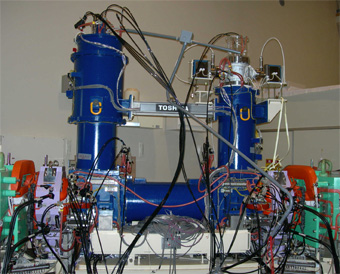Professor NODA, A., Assistant Professor SHIRAI, T., and research group“One dimensional beam ordering of protons in a storage ring ” (Published in 16 May 2007)
| Professor NODA, A., Assistant Professor SHIRAI, T., and research group Collaboration Research with National Institute of Radiological Sciences ( Group leader Noda Koji ) , Max-Planck-Institute für Kernphysik ( Germany Heidelberg ) ( Dr. Manfred Grieser ) , Joint Institute for Nuclear Research ( Russia Dubna ) ( Prof. Igor Meshkov, Dr. Alexander Smirnov )
“One dimensional beam ordering of protons in a storage ring ”
|
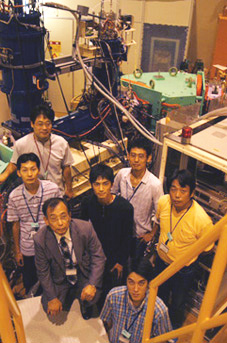 |
||||
| Professor NODA, A., Assistant Professor SHIRAI, T., and research group of beam cooling |
|||||
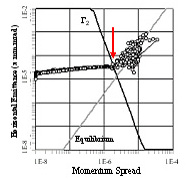 Fig.1 Computer simulation predicting 1 dimensional ordering of 7 MeV proton beam. |
An accelerator beam is, in general, in a gaseous state and compose of particles moving randomly between each other. When the beam temperature is cooled down with some method, it is expected to make phase transition to an ordered solid state, passing through a liquid phase. In fact, a sudden decrease of momentum spread is expected as shown in Fig.1 when the particle number is decreased to a certain level, which indicates phase transition. | ||||
| As methods of “beam cooling” to cool down the temperature of the beam, electron beam cooling, stochastic cooling and laser cooling, etc. are known. We have applied an electron beam cooling, which cools down the temperature of an ion beam by overlapping a very cold electron beam in a section of the storage ring as shown in Fig.2 (a) and removing the thermal energy from the hot ion beam with a cold electron beam. The cold electron beam is provided by an apparatus as shown in Fig.2(b). With the use of S-LSR, completed at ICR, Kyoto University in October, 2005, we have applied such an electron beam cooling to 7 MeV protons. When the particle number of protons is reduced to less than ~2000, the momentum spread of the beam is reduced suddenly as shown in Fig. 3 by suppression of the intra-beam scattering. |  Fig.2(a) Principle of electron beam cooling
|
||||
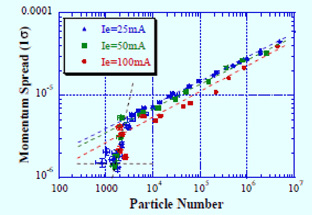 Fig.3 Data indicating 1 dimensional ordering of proton beam observed at S-LSR. |
For heavy ions, such as U92+ and Xe36+, which have higher charge states and receive a stronger electron cooling force, creation of 1 dimensional ordered state has been reported from Gesellschaft für Schwerionenforschung; GSI in Germany and Manne Siegbahn Laboratory of Stockholm University in Sweden. For protons, however, due to a single charge resulting in the smallest electron cooling force, such an ordered state has not yet been realized in spite of similar efforts at the laboratories in the world up to now. | ||||
| We have realized a 1 dimensional ordered state of proton beam for the first time in the world by applying such approach at our ion storage and cooler ring, S-LSR, which has unique features as higher superperiodicity of 6 and so on well suited for stabilization of a crystalline beam. In such a state, proton beam is ordered in 1 dimension and each proton cannot take over the fore-moving one reflected back by Coulomb potential. This work was published in Physical Review Letters, the 16th, May, 2007 (Physical Review Letters, Vol. 98, 204801). On the basis of this success, we are now applying a laser cooling with much stronger force to 24Mg+ ion with the kinetic energy of 40 keV for realization of 3 dimensional crystalline beam. These activities are widely noticed in the world and are reported by 2 invited talks at the international workshop, COOL07 |
|||||
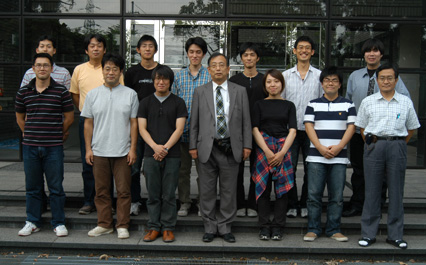 Noda Lab |
|||||
 Institute for Chemical Research, Kyoto University
Institute for Chemical Research, Kyoto University International Joint Usage Research Center
International Joint Usage Research Center